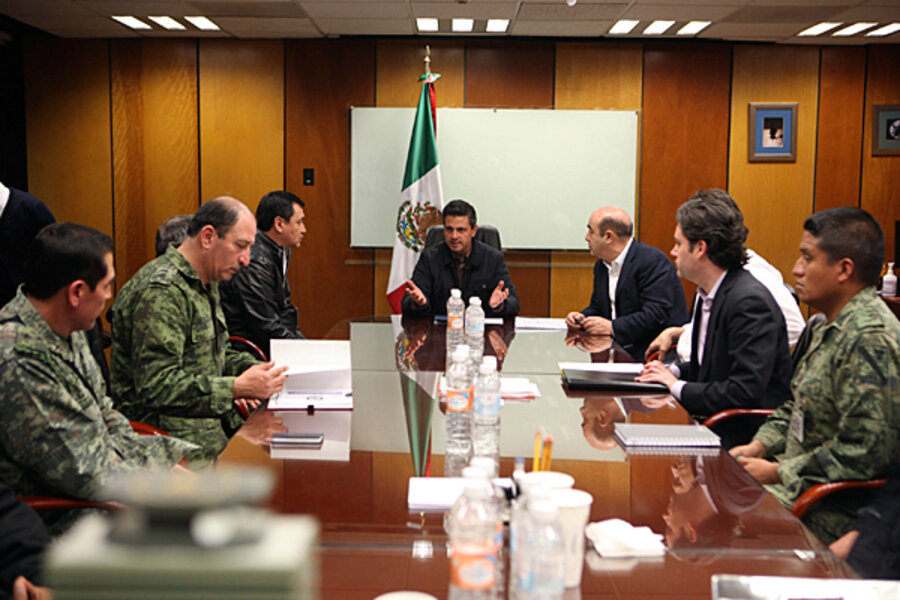A glimpse of Mexico's new crime fighting strategy
Loading...
| MEXICO CITY
Mexico’s government on Tuesday launched a comprehensive crime prevention plan aimed at strengthening communities hard-hit by the violence of an ongoing drug war.
The details of President Enrique Peña Nieto’s security strategy have been trickling out since he took office in December. Unlike former President Felipe Calderón’s government, which publicly announced troop deployments and paraded suspected criminals before television cameras, Peña Nieto has so far been quiet on the details of his security strategy.
And while the new administration hasn’t backed away from using the military to fight crime entirely – the controversial strategy favored by his predecessor – it promised a more multifaceted approach.
Yesterday's announcement of Mexico's new crime prevention program delivers on that promise. The program aims to target the roots of crime, including violence in the home and in schools. It also includes preventing addictions and detecting behavioral issues in young people early. To achieve these goals, the interior ministry will coordinate efforts across nine different federal agencies including health, education, economy, and social development, among others.
“We’re convinced that combat and punishment alone won’t resolve the problem,” Interior Minister Miguel Ángel Osorio Chong told local press.
More than six years into Mexico’s bloody battle against drug cartels, more than 65,000 people have been killed and tens of thousands remain missing. Prosperous cities like Ciudad Juárez and Monterrey have been crippled by drug-related homicides. While deaths in Ciudad Juárez have recently fallen, violence has climbed in other regions.
The government says the crime prevention strategy will focus on seven metropolitan areas in the states of Jalisco, Durango, Coahuila, and Nuevo Leon (where Monterrey is the capital), as well as two boroughs of Mexico City.
President Peña Nieto has emphasized that his security strategy will focus on reducing kidnapping, homicide, and extortion in Mexico – a departure from former President Calderón’s singular focus on nabbing cartel kingpins.
Peña Nieto hasn’t returned soldiers to their barracks, nor is there a timeline for when Mexico's troubled police forces may again take over crime-fighting responsibilities. And the violence hasn't dropped. Between Dec. 1 and Feb. 1, 1,758 people have been killed in drug violence – numbering close to 28 homicides per day.
Mr. Osorio Chong told the El Universal newspaper that it would be a mistake to expect, after years of deadly violence, that “anything will be resolved overnight,” saying “it’s an issue with deep roots.”







